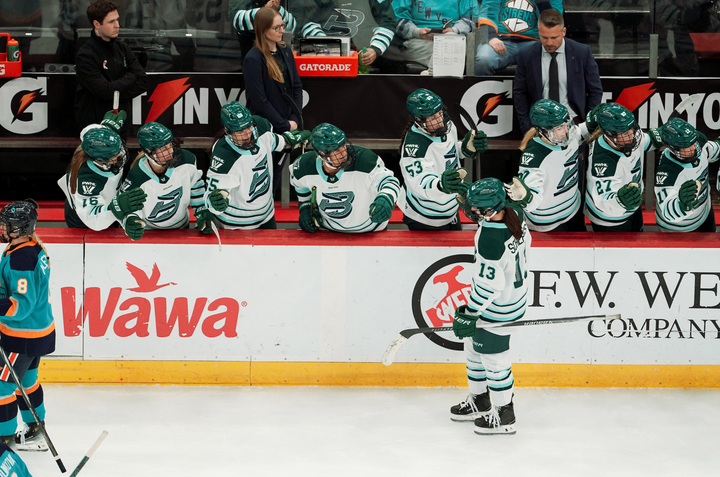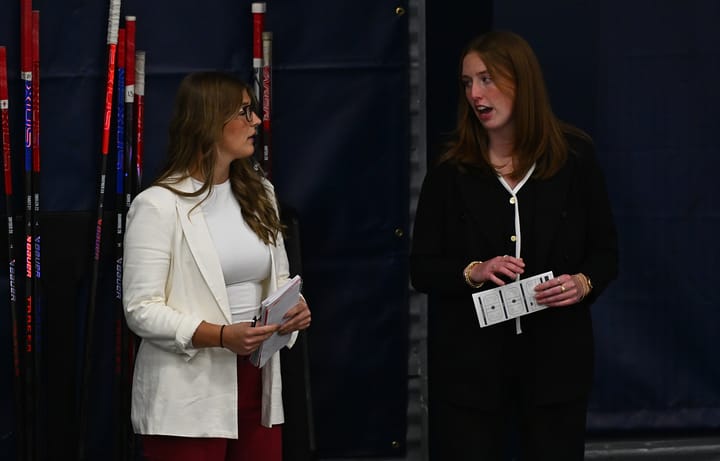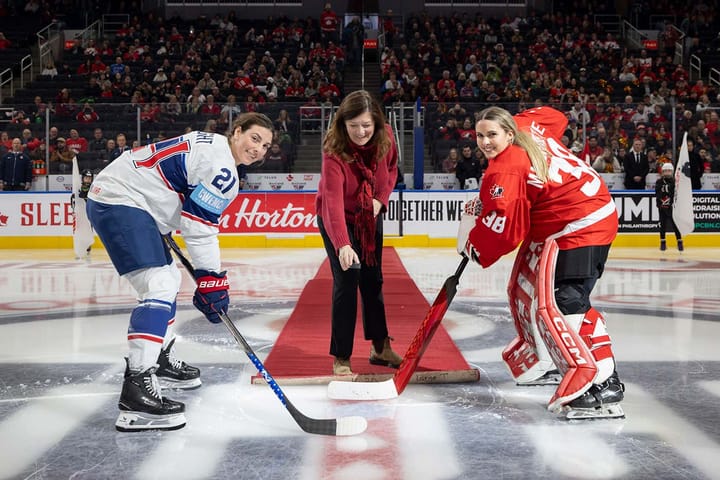Book Review: “On the Edge: Women Making Hockey History”
A unique time capsule offering a snapshot of women’s hockey before the Nagano Olympics
I received On the Edge: Women Making Hockey History by Elizabeth Etue and Megan K. Williams as a gift from a friend. So, when I opened the book this summer, I did so without limited expectations. As someone who loves hockey history, it didn’t take long for me to appreciate On the Edge for what it was — an enlightening time capsule unearthed from the world of women’s hockey before the game forever changed at the Nagano Olympics.
Search for On the Edge: Women Making Hockey History on Bookshop to buy online from a local bookshop
Etue and William’s book was published in 1996. It is a thoroughly-researched and unbiased account of the women’s game from a largely Canadian perspective. As a result of that exceptional research and the unique interviews in On the Edge, reliable data and quotes that may otherwise have been lost to time are available in abundance. So too are glimpses of players who have since become icons, including Hayley Wickenheiser, Riikka Sallinen, Angela James, and Cammi Granato.
An excerpt from On the Edge:
When she was seven, after several years of playing street hockey and shinny on outdoor rinks with neighborhood kids, [Angela] James joined a boys’ hockey team. Before long she had won the high-scorer award, much to the annoyance of some teammates and a few parents. “The boys weren’t too excited about that. They loved it when we won the games, but not when they didn’t win the awards.” In a fine example of the gender politics of sport, the boys’ league refused to allow James to return the next year, insisting that she play on a girls’ team.
Admittedly, some chapters of the book are dense and trying to slog through. The politics and operational details of the OWHA (Ontario Women’s Hockey Association) under Fran Rider are insightful, but hardly engaging. However, the province-by-province look into the growth and state of women’s hockey in Canada tells a compelling story that is largely unknown except by those who lived through it. And that, really, is what this book has to offer — it’s a well-researched account of the sport from a time when the media did even less than it does now to do justice by the game.
To their credit, the authors left few stones unturned. They sought out opinions from players and figures who were ready to criticize Rider, Manon Rheaume, and other women who shaped the history of the game. In addition to providing context to some of the divisions we see in women’s hockey today, these quotes also offer a snapshot of a sport that had an uncertain future and more opponents — both silent and outspoken — than it could count. It helps tell the story of how women’s hockey got to where it is today.
If you’ve ever wondered about what kind of impact ringette had on women’s hockey in Canada, the history of bodychecking in the women’s game, or how sexism and homophobia have long plagued the sport, this book has something for you. It has something to offer everyone who wants to know the story of women’s hockey. It inspires great admiration for the women of the Preston Rivulettes and Edmonton Chimos who carved their stories into the ice before the IIHF’s Women’s World Championships. It makes you reflect on how much and how little has changed since 1996.
On the Edge is, of course, an incomplete history of women’s hockey because it was published nearly 25 years ago, but I still recommend it without hesitation. To be frank, there aren’t many books about women’s hockey on the shelf and fewer still that tackle the subject with this level of passion and research. On the Edge was an enriching, frustrating, and fascinating read. So, fittingly enough, it felt a lot like being a fan of women’s hockey.





Comments ()